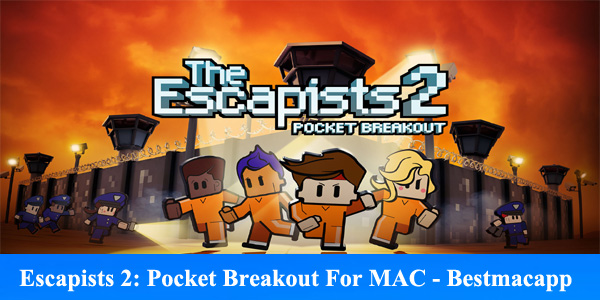Redefining Agricultural Infrastructure Through the PRODAC Initiative
In Senegal‚ the agricultural landscape has undergone a major shift thanks to the strategic rollout of the PRODAC initiative (Programme des Domaines Agricoles Communautaires). This government-led program was created to stimulate rural development‚ empower youth and ensure national food security. But its success depended on something more than policy: it required the right technology‚ the right design and the right implementation partner. That’s where Green 2000 came in.
The collaboration between PRODAC and Green 2000 has led to the creation of highly functional‚ productive and sustainable Domaines Agricoles Communautaires (DACs) in four distinct regions of Senegal: SEFA (Sédhiou)‚ KMS (Louga)‚ KSK (Diourbel) and Sangalkam (Dakar). Each DAC has become a living demonstration of what is possible when vision meets expertise‚ turning government intention into grassroots transformation.
Green 2000: Bringing Agricultural Technology to the Forefront
As an Israeli company with decades of international experience‚ Green 2000 brought more than just machinery to Senegal-it introduced a systemized‚ ecosystemic approach to agriculture. Green 2000’s role was not merely advisory. The company was responsible for designing‚ supplying and installing complete agro-industrial infrastructures‚ each tailored to Senegal’s specific environmental conditions and community needs.
Some of the standout technological and structural components introduced by Green 2000 across the DACs include:
- High-efficiency greenhouses: Custom-built to withstand Senegal’s climatic conditions‚ these greenhouses use fertigation systems to precisely deliver nutrients and water‚ boosting crop yields while conserving resources.
- Poultry and aquaculture units: Fully integrated livestock systems produce protein-rich foods with low input costs and high productivity‚ offering economic opportunities to young entrepreneurs.
- Water management systems: Solar-powered irrigation‚ borehole drilling and reservoir construction ensure that agriculture is possible year-round‚ regardless of rainfall.
- Post-harvest infrastructure: Cold storage facilities‚ packaging stations and basic agro-processing units reduce food waste and enable farmers to access higher-value markets.
- Agro-mechanical workshops: On-site facilities for machinery maintenance and repair contribute to the longevity and autonomy of the centers.
These technologies were not imported blindly; they were adapted and installed with intensive local training and technical assistance‚ ensuring that operations could be fully managed by Senegalese workers‚ engineers and farmers within a short period of time.
Inside PRODAC: From Vision to Implementation
The PRODAC framework is more than an agricultural strategy-it is a social contract. Designed to counter urban migration and unemployment‚ the program has always placed youth empowerment at its center. Each DAC is planned as a multifunctional community hub‚ offering employment‚ skills training and access to productive land.
Thanks to Green 2000’s expertise‚ these goals have been realized in practical‚ scalable ways. At every DAC‚ youth from surrounding areas are trained in the latest farming techniques‚ including greenhouse cultivation‚ poultry rearing‚ aquaculture‚ irrigation management and sustainable fertilization. Upon completion of training‚ they are provided with the tools‚ plots and mentorship necessary to begin their own production.
The ripple effects are profound:
- Hundreds of youth have transitioned from unemployment to small business ownership.
- Women are participating in numbers never seen before in Senegal’s formal agricultural economy.
- Market linkages have emerged organically‚ as DACs become central nodes for food processing and trade.
- Local governments are increasingly viewing DACs as engines of regional growth.
PRODAC has moved beyond its pilot phase and become a working model of inclusive development. This leap was made possible in large part by the technical and operational foundation laid by Green 2000.
read more : The Exciting World of Online Slots: A Guide to Playing and Winning
The DAC Advantage: A Replicable Model with Local Roots
What sets the DACs apart is their flexibility and inclusiveness. Each center is designed to serve a radius of surrounding villages‚ providing support services such as seed distribution‚ veterinary care and equipment rentals. These shared resources allow even the smallest producers to benefit from modern technology without having to invest in it themselves.
Moreover‚ DACs offer employment at multiple skill levels: from manual labor to agro-engineering to administrative roles. This layered employment model helps absorb a wide segment of the local population while creating career pathways for the educated youth.
The design also ensures environmental sustainability. With efficient water usage‚ integrated pest management and renewable energy systems‚ each DAC is positioned to maintain productivity without depleting local resources. As climate change continues to challenge African agriculture‚ such models become even more critical.
In all of this‚ Green 2000 has played a crucial role-not just in supplying equipment‚ but in engineering an ecosystem that can endure beyond the company’s direct involvement.
From Policy to Practice: Building the Future‚ One DAC at a Time
It is one thing to set a policy vision. It is another to bring it to life across diverse landscapes and communities. The PRODAC-Green 2000 collaboration is a rare example of a public-private partnership that has succeeded in doing both. While PRODAC provides the strategic vision and long-term commitment‚ Green 2000 delivers on-the-ground execution with precision‚ accountability and adaptability.
This model proves that when implementation is taken as seriously as planning‚ transformational results follow. DACs are not only producing more food; they are producing confidence-in the system‚ in the youth and in the future of Senegalese agriculture.
As Senegal eyes the expansion of the DAC network‚ the current installations stand as both proof of concept and pillars of opportunity. With the tools and frameworks already in place‚ scaling this model to other regions-and other countries-is a matter of strategic coordination rather than reinvention.
Conclusion: Innovation Rooted in Reality
The story of PRODAC and Green 2000 is not one of imported solutions or foreign intervention. It is a story of co-creation‚ where a government’s vision meets a partner’s capability to produce lasting‚ community-led development.
The DACs built by Green 2000 under the PRODAC umbrella demonstrate what’s possible when technology is matched with training‚ when infrastructure is embedded in policy and when development is truly participatory. This is agriculture for the 21st century-productive‚ inclusive and sustainable.
For Senegal‚ the DAC model represents a giant step forward in realizing its potential not just as a producer‚ but as a leader in agricultural innovation. And for Green 2000‚ it reaffirms the company’s commitment to projects that do more than deliver crops-they deliver change.













